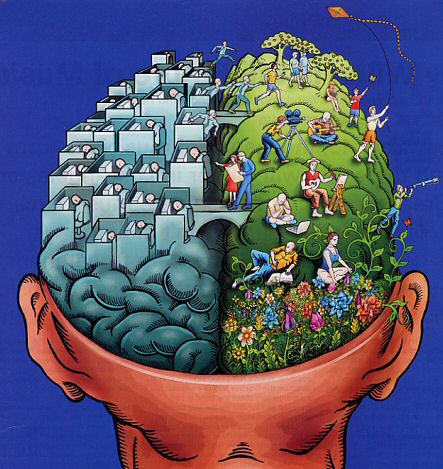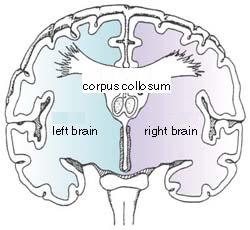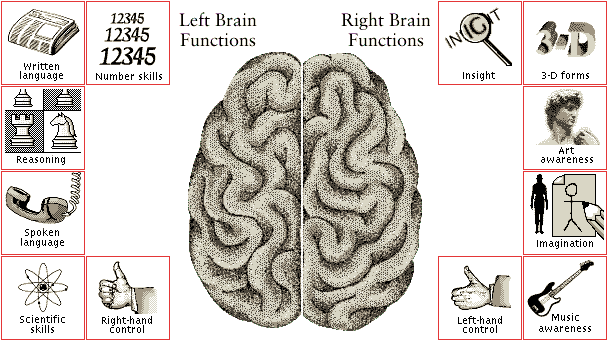Nothing Right on My Left Brain
Nothing Left on My Right Brain

“The ceramics teacher announced on opening day that he was dividing the class into two groups. All those on the left side of the studio, he said, would be graded solely on the quantity of work they produced, all those on the right solely on its quality. His procedure was simple: on the final day of class he would bring in his bathroom scales and weigh the work of the quantity group: fifty pound of pots rated an A, forty pounds a B, and so on. Those being graded on quality, however, needed to produce only one pot -albeit a perfect one - to get an A. Well, came grading time and a curious fact emerged: the works of highest quality were all produced by the group being graded for quantity. It seems that while the quantity group was busily churning out piles of work - and learning from their mistakes - the quality group had sat theorizing about perfection, and in the end had little more to show for their efforts than grandiose theories and a pile of dead clay.”
-- From the book, "art & fear".
The brain

Everybody’s brain has two distinct parts (cerebral hemispheres). The two parts are connected by a bundle of nerves called the corpus callosum. This is how the two parts communicate. Each of these parts has a set of distinct functions as follows:
|
 |
As we get older, we start to use one side more.
Left / Right & effect on learning
An important factor in understanding learning styles is to understand brain functioning. Although both sides of the brain can reason, they use different strategies. In doing so one side may be dominant than the other. The left brain is considered analytic in approach while the right is described as holistic or global. People think and learn in different ways. In any group there will always be evidence of different learning characteristics, but different cultural groups may emphasize one cognitive style over another.
LEFT |
RIGHT |
Verbal |
Visual |
Sequential |
Random |
Processes information linearly |
Processes information in varied order |
Responds to logic |
Responds to emotion |
Plans ahead |
Impulsive |
Recalls people's names |
Recalls people's faces |
Speaks with few gestures |
Gestures when speaking |
Prefers formal study design |
Prefers sound/music background while studying |
Prefers bright lights while studying |
Prefers frequent mobility while studying |
Although we tend to process information using our dominant side, the learning and thinking process is enhanced when both side of the brain participate in a balanced way. When designing curriculum, schools should give equal weights on arts and creativity and also to skills of imagination and synthesis. When a teacher is delivering his lecture, they should use instruction techniques that connects both sides of the brain. Here are some samples regarding left & right parts of the brain and its impact on learning and teaching:
-
A right brained person will have difficulty following a lecture unless the lecturer given a big picture of the topic first.
- A left brained student tends to be comfortable with linguistic and mathematical endeavors.
- Left brain students have no trouble expressing themselves in words.
- Right brain students need to backup everything visually.
Interesting links
- Check your polarity: Hemisphere dominance test.
- How to develope lectures for masses: Left Brain/Right Brain and teaching.
- A paper from Scientific American, 2002.
- Cartoon1 Cartoon 2